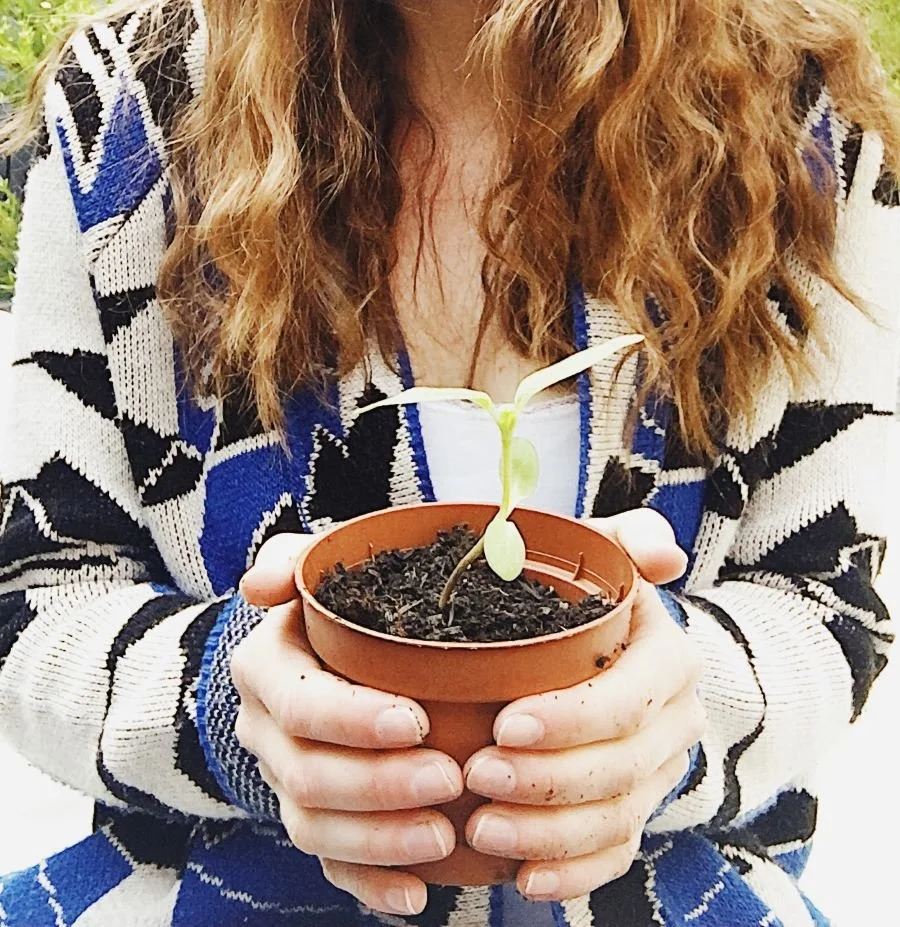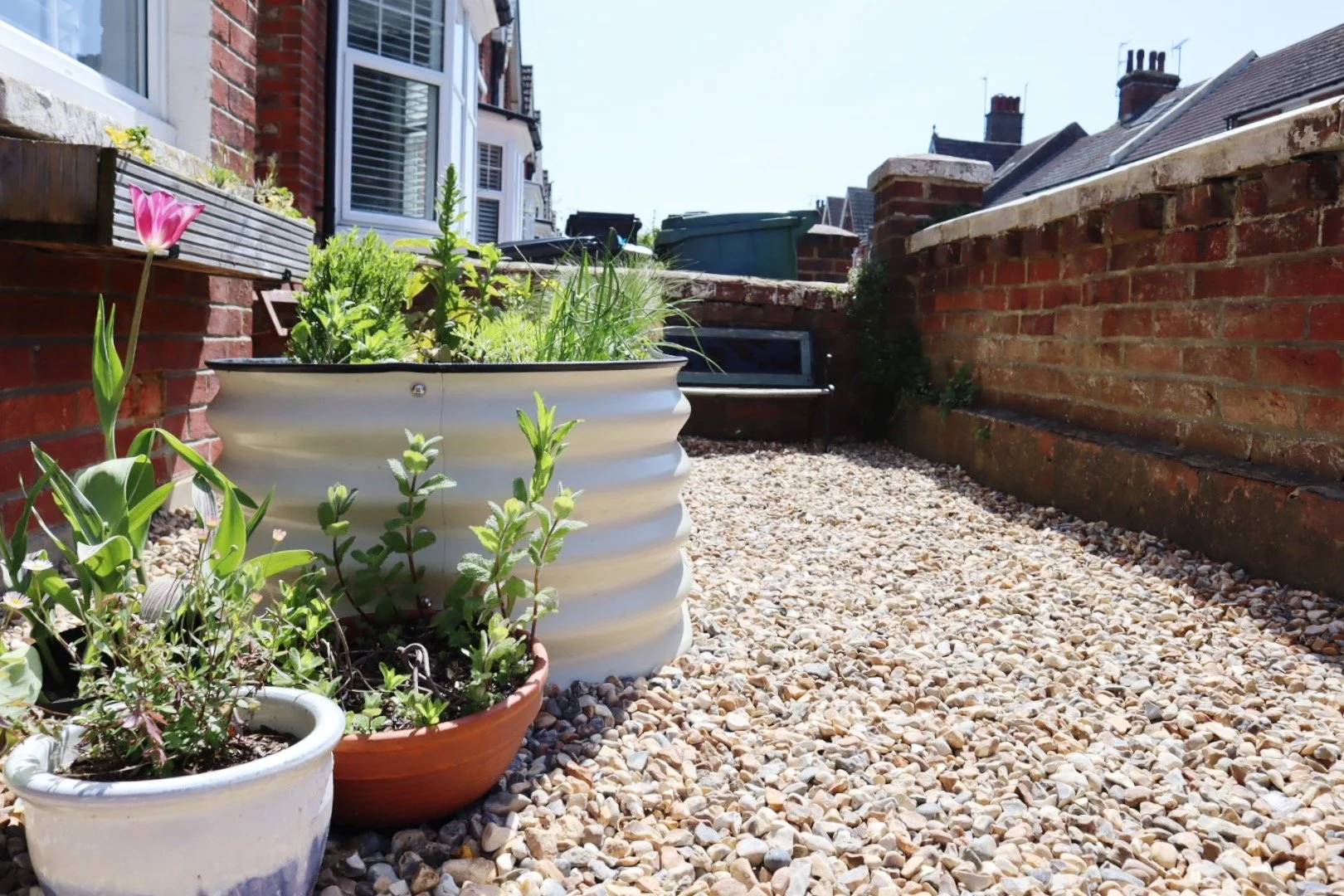Growing Lovage, an Alternative to Celery. Lovage and all of it’s uses.
Lovage is, in my opinion, one of the most underrated herbs. As a gardener, I cannot believe I didn’t discover the benefits of growing Lovage years ago. Mainly because we use a lot of celery in our cooking but I have always found celery difficult to grow. In step Lovage, which can be used as the perfect substitute for celery, as well as looking great in the garden and increasing the bio-diversity of your garden. As if you didn’t need any more convincing to grow Lovage, it is also a hardy perennial, meaning it grows back year on year with little to no help from you.
In this guide to Lovage find everything you need to know to grow it, harvest it, continue to get large yields from your Lovage plant, and how to cook with it.
Can lovage be a substitute for celery?
Lovage is a great substitute for celery. Its appearance and taste are incredibly similar to that of celery. However, the flavour of lovage can be more intense than celery so bear this in mind when cooking with it.
You may want to use smaller quantities or simply adjust the seasoning and amount you use to your personal taste if you’re using Lovage as a substitute for celery.
So why not just grow celery?
Lovage is much easier to grow than celery. It is a hardy perennial herb, meaning it can withstand a range of different climates and will survive throughout the winter, coming back year after year with little or no maintenance.
You can also divide your lovage plant (best done in autumn or early spring) to give you new plants and increase your yield each growing season.
See below for how to divide and propagate Lovage plants.
Reasons why you should grow lovage over celery.
1. It’s a hardy perennial: Celery is grown for one season, needs to be sown from seed, tenderly cared for, and then planted out where it could be taken out at any moment by pests. Lovage, however, once in the ground will give you a harvest every year, dying back in the autumn and re-growing in the spring.
2. Lovage thrives in poor conditions: Lovage is very tolerant, will grow in average or poor soil, and while it does like lots of sun it will also tolerate partial shade. Meanwhile, celery likes soil high in nutrients and a position with full sun and good drainage.
3. Watering: Lovage does like to be watered in the same way celery does, however, if we do have a hot summer or a drought lovage is much more forgiving and will survive much better than a crop of celery would.
4. Pest and disease resistant: Celery is known to attract pests such as aphids or your crop could be ruined by diseases such as celery leaf spot and bacterial blight. Lovage seems to be more resistant to these particular garden enemies.
5. Extra plants: Lovage is easy to divide and replant. This is best done in the autumn or early spring. Meaning you can have more and more plants every year. You’ll be giving them away as presents before you know it.
Is Lovage hard to grow from seed?
Generally speaking, Lovage is not hard to grow from seed. You can do so early in the season indoors (late February or early March is best) or in a greenhouse. Alternatively, sow directly outside once temperatures have reached 15-20 degrees. Lovage likes a good amount of light and warmth to germinate.
You could buy a Lovage plant from your local garden center which would be worth it as over the years it can be divided into more plants and will produce well for you, but if you want multiple plants particularly if you want to use it as a substitute for celery, sowing from seed saves on waste and money.
One thing to bare in mind when growing lovage from seed is its long roots making it a hard seedling to transplant. It is therefore often recommended when growing from seed to do so in bio-degradable pots, you could do this even in toilet roll tubes to prevent buying anything.
Once the seedling is ready to be planted you can plant it in the ground still in the bio-degradable pot which will break down in the soil and save you from having to transplant, potentially damaging the root.
How to grow lovage from seed.
Things to consider.
1. Germination time: Lovage seeds can take some time to germinate, usually around 2-3 weeks. This requires patience and consistent care during the germination period.
2. Light requirements: Lovage seeds require exposure to light for germination. Therefore, they should not be covered with soil when sown. It's important to ensure the seeds have good contact with the soil and are lightly pressed into it.
3. Temperature and moisture: Lovage seeds germinate best at temperatures around 60-70°F (15-21°C). Maintaining consistent soil moisture without waterlogging is crucial during the germination process. Too much moisture or extreme temperature fluctuations may affect germination rates.
Indoor sowing:
Sow Lovage seeds indoors in early spring. Late February or early March is best.
1. Fill seed trays or small pots with a peat free compost, you can add something like pearlite to make sure the soil has good drainage and moisture retention. b.
2. Sow the lovage seeds on the surface of the soil and lightly press them down. Do not cover the seeds with soil, as lovage requires light to germinate.
3. Mist the soil with water to ensure it is evenly moist.
4. Place the trays or pots in a warm location with indirect sunlight.
5. Keep the soil consistently moist, but not waterlogged.
6. Seeds should germinate within 2-3 weeks.
Transplanting: You will then want to transplant the seedlings into larger pots or into the garden once they have developed a few true leaves. Harden off the seedlings by gradually exposing them to outdoor conditions over a week before transplanting.
Outdoor sowing:
1. Choose a location in your garden that receives full sun to partial shade.
2. Prepare the soil by removing any weeds that may out-compete your Lovage seedlings.
3. Sow the lovage seeds directly on the soil surface, spacing them about 12-18 inches (30-45 cm) apart.
4. Lightly press the seeds into the soil and cover them with a thin layer of fine soil or compost.
5. Water gently to keep the soil moist during the germination period.
6. Seeds should germinate within 2-3 weeks, depending on the temperature and moisture conditions.
While your Lovage plants are small and getting established you may need to water them, aiming to keep the soil evenly moist but not waterlogged. Mulching around the plants with compost can help retain moisture and suppress weed growth. As the lovage plants grow, provide support or stakes if needed to prevent them from falling over. Once the plants are established they should rarely need watering or any other kind of maintenance.
How to harvest and prune Lovage
The best time to harvest Lovage is in late spring and early summer. Wait until you get a mature stem, usually when the plant reaches 60cm, though you can eat it any stage of growth. Harvesting the outer stems will encourage the plant to continue producing new growth. Ideally, harvest before the plant flowers for the best flavour.
You can harvest just the leaves if you wish or cut at the base of each stem to use the whole thing.
Harvest regularly even if you don’t need any at that time, the more you harvest or prune the better encouraging more vigorous growth. This will also prevent the plant from becoming too woody and also prevent it from flowering too soon extending the growing and harvesting season of your plant.
You can prune a lovage plant right back to the base of the plant. This somewhat serve amount of pruning will encourage new growth.
How to store and preserve lovage.
Lovage will store in the fridge well. To extend the amount of time it lasts in the fridge pop them in a plastic bag or a container with a dry cloth placed underneath it. You can also freeze lovage, simply cut it into small pieces first and put it in a freezer bag.
Pest’s that can affect Lovage.
Lovage is a great herb to grow as it is relatively resistant to pests. However no plant is completely resistant and lovage can be affected by aphids, slugs and snails, leaf miners, caterpillars and carrot root fly.
Here are some organic ways to deal with pests affecting Lovage.
Aphids: Aphid appear in clutters of green or black insects on a plant and will damage to the plant. In an organic garden you can wash them off with water and/or wait for beneficial insects such as ladybirds to come and eat them for you. If you don’t want to wait for this it is possible to use a natural insecticidal soap which will wash them offer and prevent them from clinging to the plant again.
Slugs and snails: Slugs and snails will only really be a problem to Lovage when you are planting out a new smaller plant. They could take the whole plant from you. Once the plant is bigger they may eat some of the leaves but will leave minimal damage. To keep the slugs from your baby plants organically you can wait until the plant is big enough for the slugs to keep away from it, or use coffee grounds, beer rings, and crushed egg shells to deter the pests.
Leaf Miners: Leaf miner larvae create tunnels or trails on the surface of lovage leaves, causing them to appear discoloured or distorted. Pruning and discarding the affected leaves should be enough to get rid of these pests, but you could also consider using sticky traps or applying beneficial nematodes to control leaf miners. Make sure you dispose of effective leaves by soaking them in water before adding them to the compost bin, or the larvae will continue to be a problem. You may even be able to see the larvae in the leaves if you look closely at areas they have eaten.
An image of what the damage leaf miners can cause looks like
Carrot Rust Fly: These flies lay their eggs near the base of lovage plants, and the larvae burrow into the roots, causing damage and stunted growth. Use physical barriers like row covers or fine netting to prevent the flies from accessing the plants. If you do encounter these pests crop rotation and removing any affected plants or debris can help control carrot rust fly in the future.
Caterpillars: Caterpillars such as parsley worms and swallowtail caterpillars can be found to feed on lovage leaves. Handpicking them off as soon as you spot them will prevent them from causing damage.
Propagating lovage.
The best way to propagate Lovage is to divide the plant. This is an easy process to do and can be done to each new plant after a year’s new growth, meaning you could have an entire farm of Lovage before you know it.
Here’s a step by step guide to dividing Lovage.
1. When to divide Lovage. It is best to do this method in late autumn or early spring when the plant is dormant or in a stage of minimal growth. This means the plant can put all its energy down into its roots while the soil is still relatively warm rather than trying to grow new leaves and establish its roots at the same time, which would exhaust the plant and likely kill it.
2. Watering. It’s a good idea to give the plant a good water before dividing it. A few days before it you can. This will make the plant as strong as possible before we start disturbing it.
3. Digging up: Try to dig the plant up carefully a few inches from the base to avoid damaging any roots as much as possible.
4. Dividing: Once you’ve lifted the plant with it’s root ball hopefully intact, separate it into smaller sections. You should be able to see natural places where the plant with split into clumps. Each section should have a portion of the crown (the area where the stem emerge) and a good amount of healthy roots.
5. Replanting: You can now replant each section into the soil ensuring the crown is at soil level.
6. Water: The new plant will now need a good drink and a few more regular waters until it establishes itself. It will like consistent moisture but not to be water logged.
More culinary uses for lovage.
Soups and stews. Lovage leaves or the stems will add a lovely savory taste to your soups or stews. It goes particularly well with root vegetables and potatoes.
Salads: The leaves from lovage can be chopped finely and added to salads, adding a herby deep flavour to make a regular salad much more interesting.
Gravy: Adding Lovage leaves to gravy will enhance it’s flavour and well as different sauces particularly with red meat-based dishes.
When cooking with Lovage remember it has a stronger taste that celery. Start by using it sparingly and adjust the taste to your own taste while you get used to cooking with it.
Tea Infusion: There are a few methods you can use to make lovage tea:
Fresh Leaf Method: Place a few lovage leaves (about 1-2 teaspoons) into a teapot or teacup. Pour hot water (just below boiling) over the leaves and let them steep for 5-10 minutes. Adjust the steeping time based on your preference for a stronger or milder flavor. Strain the tea and enjoy.
Combining flavours: Get creative and combine lovage leaves with other herbs or tea leaves for new and interesting flavours. Mint, lemon balm, or chamomile all make great pairings with lovage.
Drying lovage leaves for tea: If you have harvested lovage leaves and want to preserve them for future use, you can dry them. Spread the leaves in a single layer on a drying rack or a clean, dry surface. Allow them to air dry in a cool, well-ventilated area until crisp. Store the dried leaves in an airtight container. To make tea, use 1-2 teaspoons of dried lovage leaves per cup of hot water and steep for 5-10 minutes.
Ice tea: Use any of the methods above over ice for lovage ice tea. It’s the perfect refreshing summers drink. Adding sweeteners like honey or lemon really enhances the flavour when making it for ice tea.
Lovage Infused oils:
Preparing the leaves: Chop the lovage leaves into smaller pieces. This helps to release the flavors and allows the oil to extract the desired properties more effectively.
Which oils to use: Select a high-quality oil that has a mild flavour and a high smoke point, such as olive oil, grapeseed oil, or sunflower oil. The oil should complement the flavours of the lovage without overpowering them.
methods you can use to infuse lovage into oil:
1. Cold Infusion Method: Place the chopped lovage leaves into a clean, dry glass jar. Pour the oil over the leaves, making sure they are fully submerged. Close the jar tightly. Store the jar in a cool, dark place, such as a pantry or cupboard, for about 1-2 weeks. During this time, the oil will slowly extract the flavors and aromas from the lovage leaves. Shake the jar gently every few days to help distribute the flavors.
2. Heat Infusion Method: In a saucepan, gently heat the oil over low heat. Add the chopped lovage leaves to the warm oil and let it simmer for about 1-2 hours, stirring occasionally. Do not let the oil boil. After the desired infusion time, remove the saucepan from the heat and allow the oil to cool. Strain the oil through a fine-mesh sieve or cheesecloth to remove the lovage leaves.
Once the infusion is complete and the oil is strained, transfer it to a clean, airtight glass bottle or container. Store the infused lovage oil in a cool, dark place to maintain its freshness and flavours. It can be refrigerated to extend its shelf life.
You can use lovage oil as an ingredient in dressing, marinades, dips or drizzled-over dishes for a different, yummy and interesting finishing touch. Top of Form
In addition to having many uses in the kitchen, Lovage can be used in many additional ways.
It has a long history in traditional medicines with potential health benefits. It is thought to have diuretic properties and aids urine flow to help with water retention. It is also said when used in herbal remedies to help with our digestive issues such as bloating and gas.
As well as medicinal Lovage is used in Aromatherapy to promote mental well-being and relaxation.
Back in the garden it can be used for companion planting to deter pests from other plants and for growing tall to create shade and protection for other plants.
And lastly it can be used as an ornamental plant. It’s green foliage can be used to create interest and height in the garden, adding to the bio-diversity of an organic garden.
Now if all of that hasn’t convinced you Lovage would be a great addition to your garden or allotment I don’t know what will.
HAPPY GROWING!
mORE ARTICLES YOU MIGHT ENJOY…
The Complete Guide to Companion Planting for Beginners.




















Growing garlic organically on a no dig allotment. The best and easiest way to grow garlic.